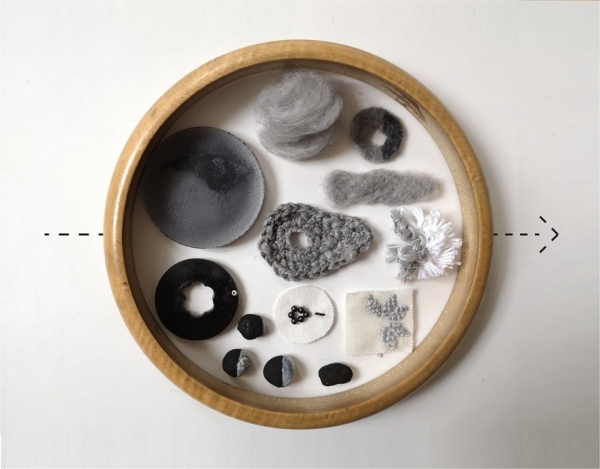
Around 200 Israeli and international designers will be featured, with about 50 from various countries including Turkey, Romania, Taiwan, Japan, China and India. About 90% of the works were made specifically for the festival. Jerusalem Design Week will open with a special Chinese-themed evening on June 13 at 7:30 p.m.; the event will run until June 20. Admission is free. Most programs will take place at Hansen House, Jerusalem.
The first time Ran Wolf was in Hansen House, it was part of a childhood dare with his friends. That was years before the historic Jerusalem location became known as a place to host culture events such as the upcoming Jerusalem Design Week. Back then, the leper hospital was still active.
“I took about five showers and couldn’t sleep for days,” Wolf toldthe Jerusalem post ahead of the event. His association with the building in the upcoming week will be for artists and designers rather than the contagious disease of leprosy that today can be treated with antibiotics.
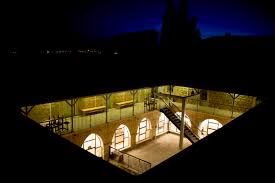
The tall walls still exist, but today they lead into a charming garden that surrounds the structures that date back to the 1880s.“This is the ninth year for Jerusalem Design Week and it keeps getting better every year,” Wolf, a general manager of the project and an urban planner, told In Jerusalem.
Around 200 Israeli and international designers will be featured, with about 50 from various countries including Turkey, Romania, Taiwan, Japan, China and India. About 90% of the works were made specifically for the festival.
This year’s theme is East, and Wolf, a Jerusalem native, has many thoughts on what the term means. “East of what?” he pontificated. “East Manhattan, Eastern Europe, the Far East? Actually, the decision about which side is east and which side is west is a human decision that was made in Greenwich,” Wolf said, referring to the prime meridian in England in which modern maps are centered.
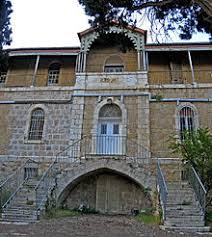
One installation is a round outdoor pavilion called East of Sun erected in the Hansen House courtyard. It is meant to convey the idea that in a circular structure, there is no true east or west. Another is a collection of entries from students at the NB Haifa School of Design on their personal interpretation of the concept of east and west.
Some exhibits feature Asian themes. Wolf explained that certain styles from China, Japan and Taiwan have now become cultural phenomena in the West. Several such designers will be in Jerusalem for the event.
One of these is titled “Drawn by Drone” by a Japanese team called Figlab. Can unmanned aerial vehicles create works of art? The combination of technology and aesthetics is what makes the event so interesting.
But as much as Wolf is excited about the creators from abroad, he is equally enthusiastic about giving back to the city where he grew up. Local artists and designers featured in the exhibit reflect the diverse population of the capital city.
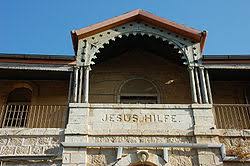
In keeping with the theme of East, the gallery will present works that incorporate the artistic mizrah wall plaques that have historically been placed on the walls of synagogues or private Jewish homes indicating which direction to face when praying. It is traditional to pray facing toward Jerusalem, and the “mizrah boards” take into account that Jews of the exile would face that direction. Of course, Jews living in the “East” would thus be facing west, toward Jerusalem, when in prayer.
The other take of the theme of “mizrah” is the term “Mizrahim,” a word used today to refer to the Sephardi and Middle Eastern Jewish population.
Muslim artists from Jerusalem and other Arab communities will be featured in what is called the Matchmaker Project, which features handmade wood carvings and other traditional items. A special exhibit will be featured off-site at the nearby Islamic Museum of Art.
Students from the various schools, clothing designers, architects and the artists from abroad will gather in the historic courtyard in the Talbiyeh neighborhood.
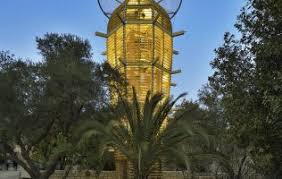
“Every year we have more than 100 events in the theme of design, art and culture,” Wolf said. “We have 500 students from Bezalel with a focus on design and tech, and we have a lab with 3-D printers and other cutting-edge equipment,” he stated.
There is also a residency program in the basement, where film, industrial design and art students create their works. But the new residents of the basement still don’t completely erase the past 100 or so years.
“There is a permanent exhibit of old photos showing the former patients of Hansen House,” Wolf related. “Some people look at those photos and are then afraid to touch the walls. The urban legends and mystery surrounding this place are still here after so many years.”
He credits the preservation of the building to Ruth Wexler, who served as head nurse in the final years of its operation. “She was like the guardian of the compound because she was worried what would happen to this unique building.”



